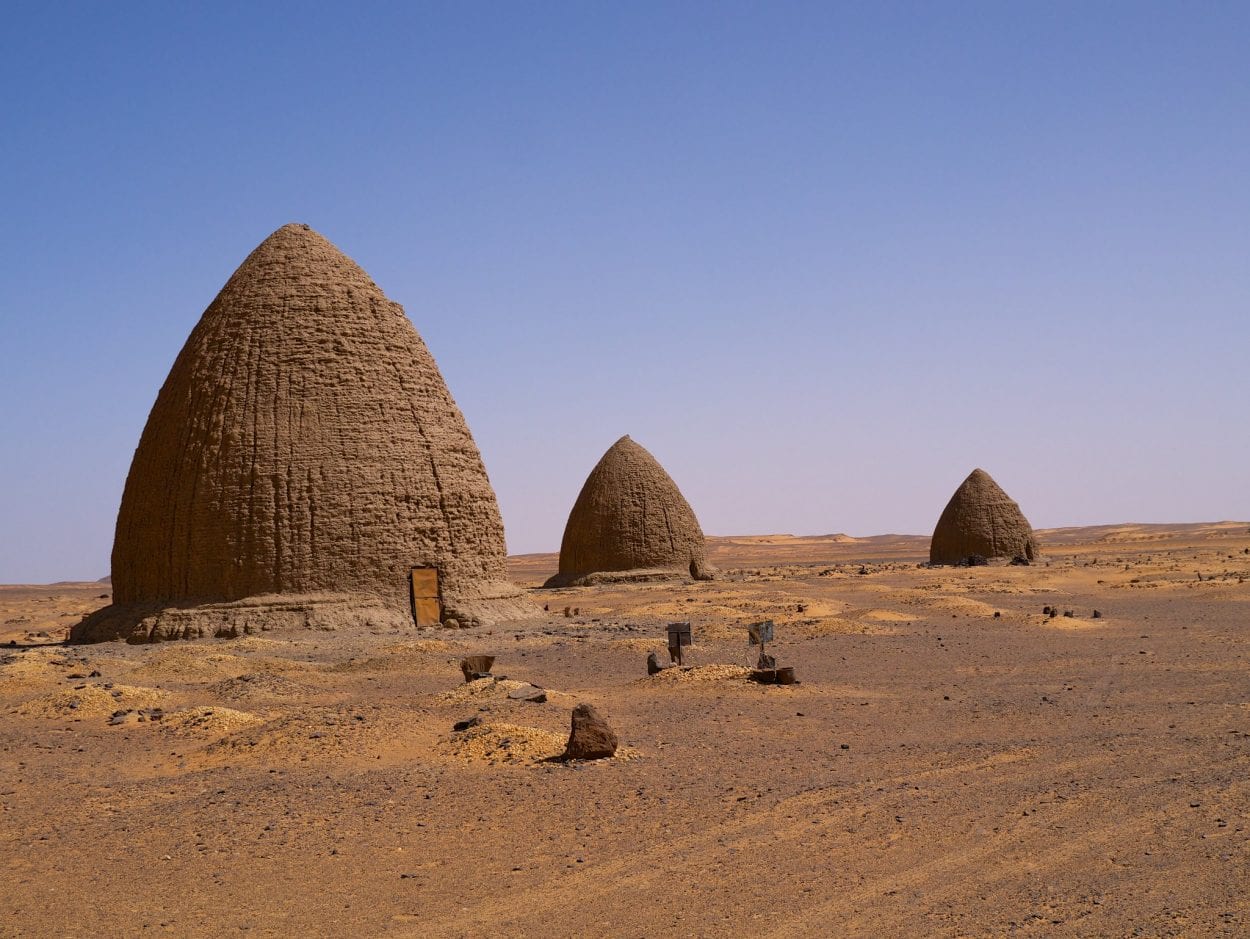Old Dongola was the capital of the Nubian kingdom of Makuria, located in the Northern State of Sudan, on the eastern banks of the River Nile.
The Kingdom of Makuria emerged during the 5th century AD after the collapse of the Nubian Kingdom of Kush. At its peak during the 9th–11th century AD, Makuria covered the area along the Nile River from the Third Cataract, to south of Abu Hamad, as well as parts of northern Kordofan.
The kingdom saw cultural and religious reforms, referred to as “Nubization”, that sought to counter the growing influence of Arabic in the Coptic Church, and introduced the cult of dead rulers and bishops, as well as indigenous Nubian saints.

Old Dongola was founded in the walls of a 5th century fortress, after the early rulers of Makuria moved the capital from Napata. A major urbanised town developed around the fortress walls, along with palaces, public buildings, churches, and a royal residence, serving as an important departure point for caravans west to Darfur and Kordofan.
North of the settlement, a large two storey building was constructed in the 9th century AD during the reign of King Zacharias III (AD 835–857) and Georgios I (AD 835–887).

Interpretations of the structure have ranged from a church, monastery, and a royal castle. However, the internal design and Byzantine inspired architecture suggests that the building likely served as an official throne hall. In AD 1317, it was turned into a mosque, an event which is preserved in a foundation stela erected by Sayf al-Din Abdullah Barshambu.
By the 13th and 14th century AD, Old Dongola was in decline and the Kingdom of Makuria was attacked several times by Arabs and ravaged by plague. The royal court moved to the city of Addo, abandoning Old Dongola to the Banu Ja’d, although some sources cite the Funj.

The French traveller Charles-Jacques Poncet visited Old Dongola in AD 1699, and in his memoirs, he recorded:
“The houses are ill built, and the streets half deserted and filled with heaps of sand, occasioned by floods from the mountains. The castle is in the very centre of the town. It is large and spacious, but the fortifications are inconsiderable.”
Header Image Credit : anmede – CC BY-SA 2.0





